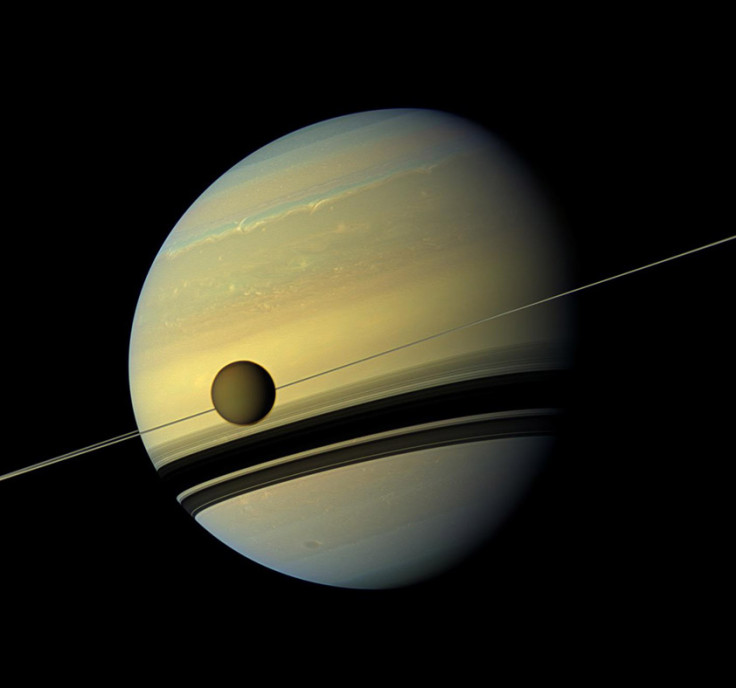Brightness of Saturn's largest Moon Titan provides new tool to study mysterious exoplanets
Titan is brighter at twilight that in daylight, according to a new study.
Saturn's largest moon Titan is brighter at twilight than at daylight, scientists have found. This behaviour is unique in the Solar System, but the astronomers think it may be possible to identify it in distant exoplanets.
Before 2004, very little was known about Titan. Scientists had just been able to estimate its size and they knew that it has a dense, nitrogen-rich atmosphere.
But it wasn't until the Cassini mission was launched that they were able to map the moon's surface and to identify seas of liquid methane replenished by rain from hydrocarbon clouds. There is also evidence that Titan harbours a large, internal ocean composed of water and ammonia.
Titan has an unusual atmosphere and its essential properties are well-known by now.
However, investigating the brightness of Moons (or planets for that matter) can provide additional insight into the composition of their atmospheres as well as into their energy budgets (the balance of incoming and outgoing radiation).
In a study now published in the journal Nature Astronomy, scientists present brightness measurements of Titan, from ultraviolet to near-infrared wavelengths.
The team used calibrated, whole-disk images taken with Cassini's ISS Narrow Angle Camera to conduct the analysis. They show that at various wavelengths, Titan is brighter at twilight than in daylight. On the basis of the reported observations and computer models, they predict that the back-illuminated moon will appear much brighter than when it is fully illuminated.
"I was surprised about this brightness behaviour, it makes Titan unique in the solar system. However, this suggests it may be possible to identify a similar behaviour for exoplanets outside our solar system," lead author Antonio García Muñoz told IBTimes UK.

The scientists believe that this behaviour is due to the Moon's extended and hazy atmosphere – two characteristics that have previously been associated with a number of known exoplanets.
"The idea is that if we could identify similar brightness behaviours on other planets, we may be able to characterise their atmospheres. Detecting this phenomenon would allow us to define whether they have an extended atmosphere with haze and to constrain the properties of the haze particles," Muñoz added.
In the quest to find life on exoplanets outside the Solar System, characterising their atmospheres is a step forward. These findings may provide a new tool to characterise the atmosphere of distant exoplanets. "However, concluding whether an exoplanet harbours life with this method would be far-fetched," the scientist warns.
© Copyright IBTimes 2025. All rights reserved.





















